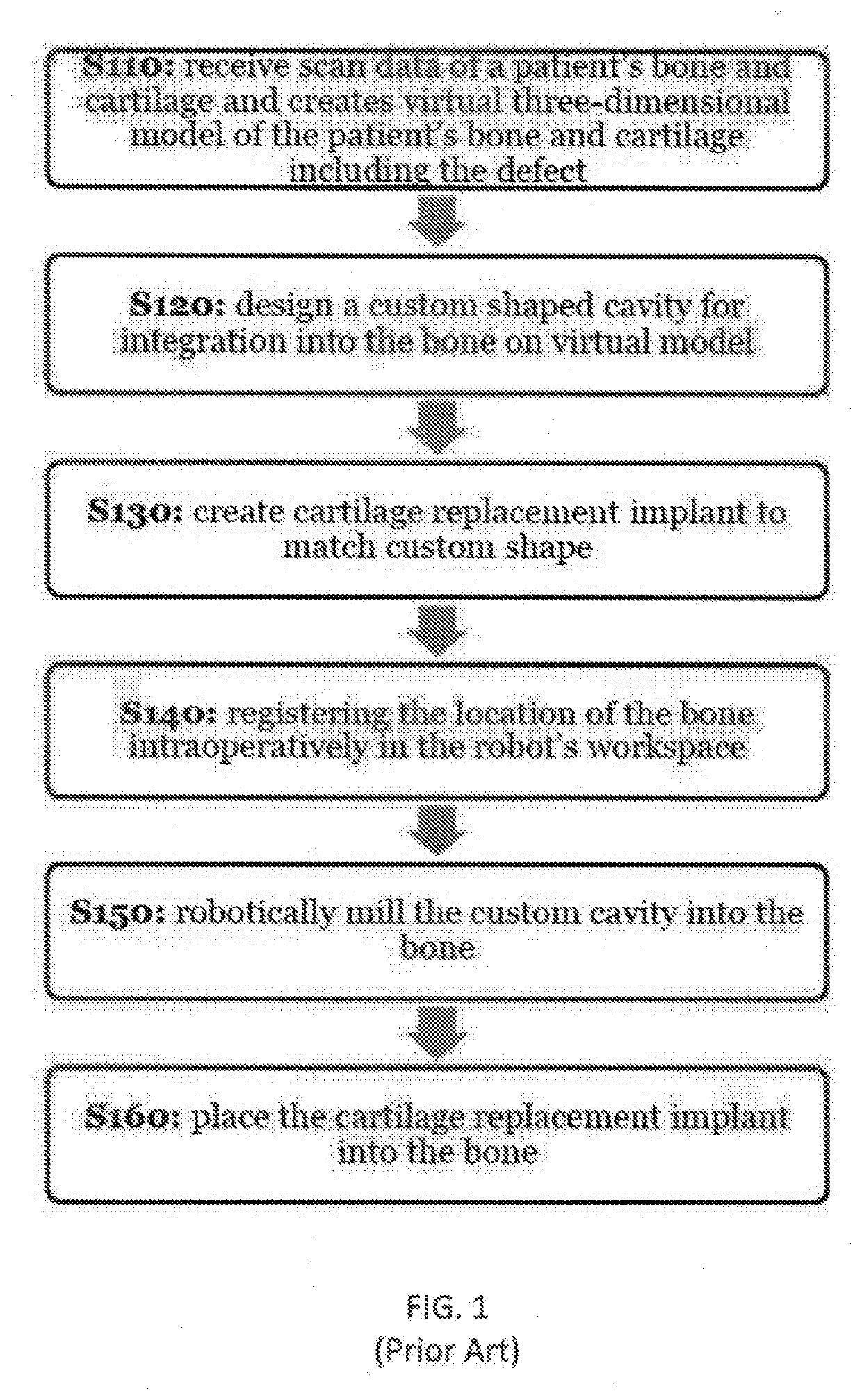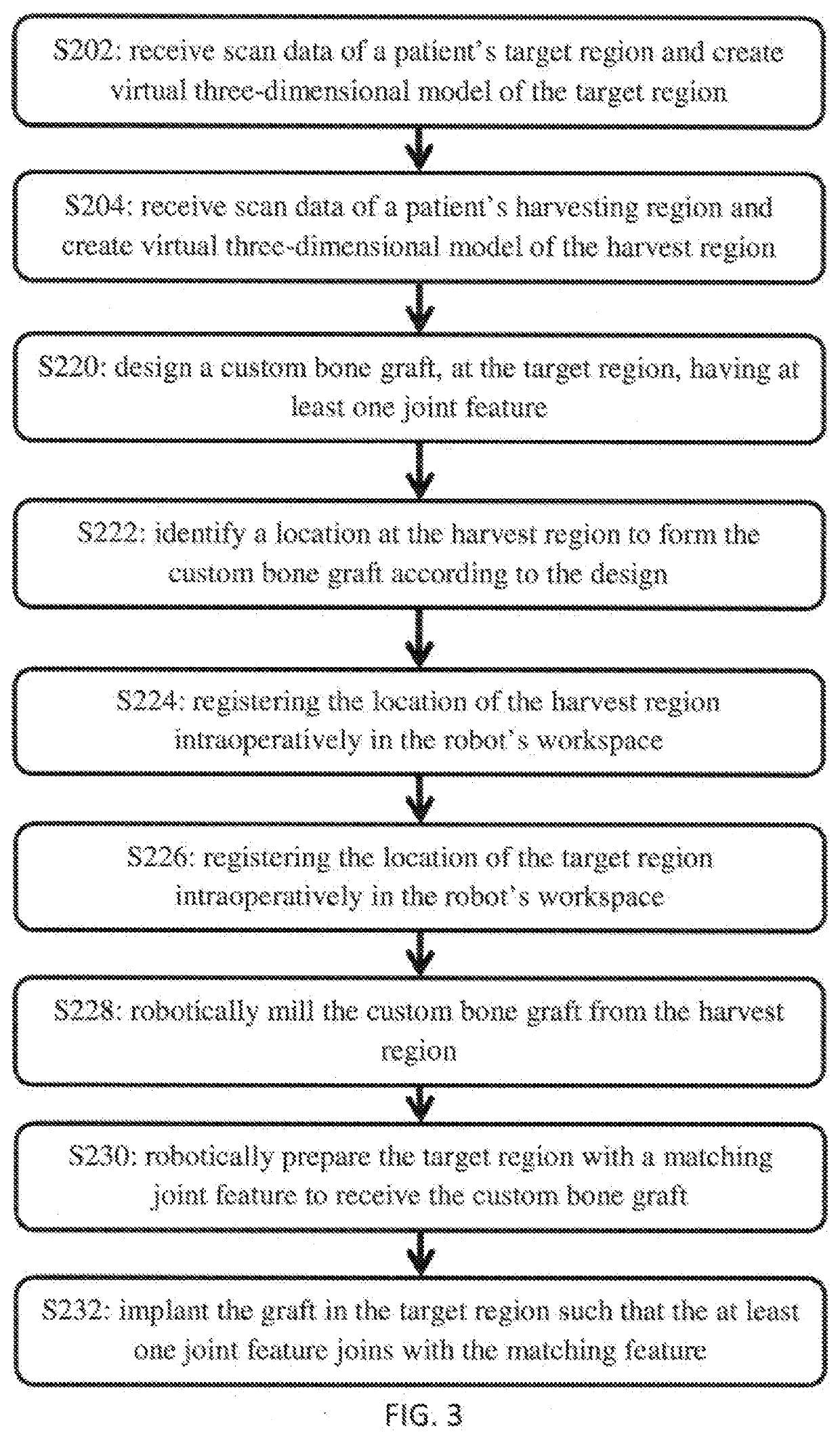System and method for planning and executing autologous bone grafting procedures
a bone grafting and autologous technology, applied in the field of computer-aided orthopedic surgery, can solve the problems of low precision, high morbidity, and limited shape availability, and achieve the effect of reducing the risk of bone grafting, and improving the quality of bone grafting
- Summary
- Abstract
- Description
- Claims
- Application Information
AI Technical Summary
Benefits of technology
Problems solved by technology
Method used
Image
Examples
Embodiment Construction
[0025]The present invention has utility as a system and method for planning and executing bone grafting procedures. The system and method is especially advantageous for complex cases requiring the replacement of missing bone, filling gaps in a bone, or bridging of two or more bone fragments together, which is common in procedures such as maxillofacial facial reconstruction, long bone fracture repair, high tibial osteotomies, and vertebra spinal fusion. As reference is made herein to the replacement of a portion of the mandible in maxillofacial surgery specifically, it should be understood that the present invention may be applied to other bones and joints found within the body illustratively including the radius, ulna, humorous, femur, tibia, fibula, the bones of the hand and feet, vertebra, pelvis, skull, sternum, ribs, and each of their associated joints where applicable. It is also contemplated that the system and method described herein is readily applied for use on non-humans. ...
PUM
 Login to View More
Login to View More Abstract
Description
Claims
Application Information
 Login to View More
Login to View More - R&D
- Intellectual Property
- Life Sciences
- Materials
- Tech Scout
- Unparalleled Data Quality
- Higher Quality Content
- 60% Fewer Hallucinations
Browse by: Latest US Patents, China's latest patents, Technical Efficacy Thesaurus, Application Domain, Technology Topic, Popular Technical Reports.
© 2025 PatSnap. All rights reserved.Legal|Privacy policy|Modern Slavery Act Transparency Statement|Sitemap|About US| Contact US: help@patsnap.com



